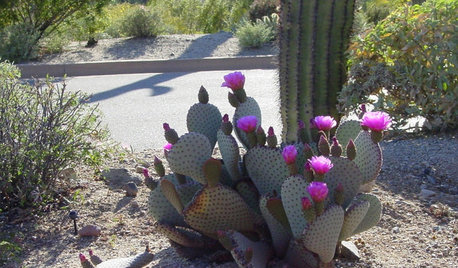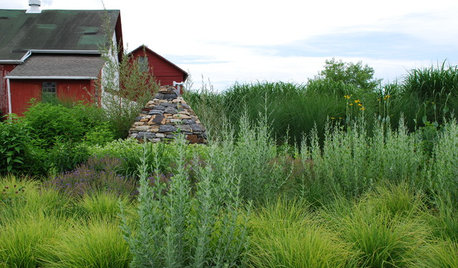problems with new spring growth
veryzer
14 years ago
Related Stories

REMODELING GUIDESNew Home Renovation Study Paints Positive Growth Picture
More than two-thirds of industry professionals say 2014 was a good year and 2015 is looking hopeful
Full Story
REMODELING GUIDESThe Hidden Problems in Old Houses
Before snatching up an old home, get to know what you’re in for by understanding the potential horrors that lurk below the surface
Full Story
LANDSCAPE DESIGNProblem Solving With the Pros: Rustic Simplicity in a Country Garden
Editing thoughtfully and adding some magic result in a timeless weekend retreat
Full Story
KIDS’ SPACESGuest Picks: Fun and Functional Growth Charts
Track your child's growth with one of these 20 artful charts
Full Story0

GARDENING GUIDES8 Cactuses Bring Spring Flowers to Dry Gardens
These prickly desert plants transform in spring with the arrival of their colorful blossoms
Full Story
GARDENING GUIDESSolve 3 Common Landscape Problems — With More Plants
Sometimes the best defense is a good offense
Full Story
LANDSCAPE DESIGNProblem Solving With the Pros: Sustainable Landscape Captures Runoff
An underground cistern, permeable paving and a rain garden are part of this Washington, D.C. yard's thoughtful design
Full Story
LANDSCAPE DESIGNProblem Solving With the Pros: An Abundant Garden Stretches Its Means
Swaths of resilient, eye-catching plants thrive with little care or resources in the landscape of a Pennsylvania farmhouse
Full Story
GARDENING GUIDES11 Favorite Edibles for Your Cool-Season Garden
Plant crunchy carrots, crisp radishes, tender peas and other vegetables for fall and spring harvests
Full Story
MOST POPULARSpring Gardens Are Blooming — Here’s What to Do in April
Get the guide you need for gardening in your U.S. region, with tasks, climate-appropriate plantings and more
Full Story





iris_gal
veryzerOriginal Author
Related Professionals
Winder Landscape Architects & Landscape Designers · Medford Landscape Contractors · Berkley Landscape Contractors · Brookfield Landscape Contractors · Caldwell Landscape Contractors · Cincinnati Landscape Contractors · Fort Atkinson Landscape Contractors · Hampton Bays Landscape Contractors · Hayward Landscape Contractors · Lake Zurich Landscape Contractors · Lehigh Acres Landscape Contractors · Matteson Landscape Contractors · Ramsey Landscape Contractors · Waldorf Landscape Contractors · Wentzville Landscape Contractors